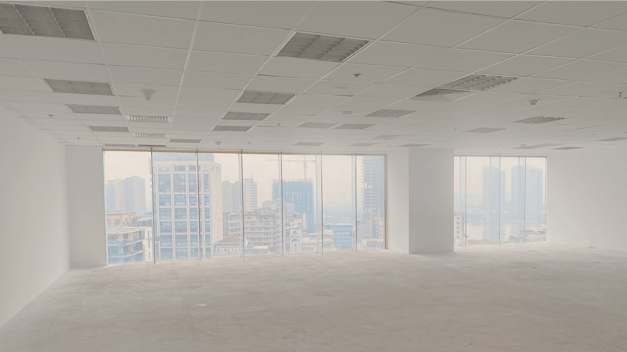How much office space is required post-COVID?
August 6, 2020
As companies begin to navigate the process of getting employees back into the office, they also face the difficult task of ascertaining how much office space they really require, both now and in the long-term. The question is, how can employers prepare themselves for the challenge?
The acceleration of flexible working trends
As we’ve all seen, COVID-19 has provided companies with the unique opportunity to understand how working from home can function for their employees. Whilst there has been a steady shift towards flexible working in recent years, working from home has become imperative in order for many companies to survive over the past few months.
It seems increasingly likely that this global pandemic will prove to be a major tipping point for the digital transformation of the office. Workplace strategies will not – or cannot – revert to their previous models.
- Interested in learning more about the history and future of the workplace? Check out our PropTech Guide to Workplaces.
Google has recently announced that its staff will work from home until at least July 2021. Other tech companies, including Facebook and Twitter, have also committed to allowing most employees to work remotely indefinitely, even once COVID-related restrictions are lifted.
Since it is now apparent that working from home is a feasible option, many employees may not want to return to the office full-time once restrictions are lifted. A report conducted by access-management company, Oktra, has found that only only one in four UK respondents is keen to go back to the workplace on a five-day-a-week basis. This means that 75% of employees are ready to embrace flexible working and the benefits it can bring, from avoiding long and costly commutes, to the flexibility to look after family members when necessary.
It’s strikingly clear that in order for offices to survive and remain relevant, there needs to be a greater focus on flexibility, wellness, and collaboration. Companies need to adapt and innovate in order to provide a physical workplace that is worth commuting for.
Is downsizing the answer?
Due to the increased prevalence of working from home, many businesses may feel as though some of their space is no longer necessary. A string of major employers have said that they are already preparing to cut costs by reducing their office estate, with a recent survey suggesting that 44% of companies are considering doing so.
The average cost of a single desk space in Central London is approximately £12,000 per annum. Downsizing or re-allocating space is undoubtedly an extremely effective cost-saving measure, and this may become particularly important in the looming economic recession. However, it is essential that companies retain enough space to accommodate employees if and when they return to the office. This is particularly important with social distancing rules still in place, as any decisions about reducing space cannot compromise the safety and comfort of employees.
Companies need to adopt a coherent strategy to control the number of staff working in the office at any given time, to ensure employees can social distance with ease. Downsizing could undoubtedly be the answer for some companies, but this needs to be an informed and carefully considered decision.
The role of occupancy monitoring
By implementing IoT sensors throughout their office, companies can accurately measure the effective occupancy for any area of interest in real-time. A software platform can then be used to aggregate and analyse the data, providing valuable insights into space utilisation.
When employees initially return to the office, occupancy monitoring can ensure companies keep their headcount below a certain threshold, allowing staff to adhere to social distancing guidelines.
Occupancy data can also be used to inform a staggered employee schedule: if companies can understand how many people are in different areas of the office, they can create time-based allotments accordingly.
In Equiem’s recent Global Office Tenant Report, 60% of occupiers said they wouldn’t return to the office until it ‘feels safe’, with the same percentage also expecting current office density information to be available. If companies want to encourage their employees to return to work, they will need to have access to occupancy data to demonstrate that they are dedicated to providing a safe and healthy working environment.
Sensor technology can track real-time people count, density in a given area, distance between occupants and movement between zones. Real-time alerts can then be used to manage the flow of staff, avoiding overcrowding and ensuring employees feel safe in their space.
The future of the office?
Occupancy monitoring can not only enable companies to understand how their space is being used currently, but can also help to inform decisions about how much space will be required going forwards. With access to historical data, patterns and trends, employers can ascertain both the quantity of space that is needed, and the type of area that is used most effectively by employees.
Many are now predicting the end of the open-plan workplace and the return of small, private offices. However, it is also clear that the cellular office plan has limited benefits for workplace culture. If employees can carry out daily tasks at home, offices will need to become a space for collaboration, communication and innovation.
There will be a need for a range of open-plan spaces, and occupancy monitoring will be vital to highlight any particular areas that are overused or underused. Over time, this can enable companies to understand the optimal layout for their office.
It’s undoubtedly a difficult task to predict exactly what the workplace will look like in the wake of COVID-19, and there cannot be a one-size-fits-all approach. However, having access to real-time data has an important role to play in enabling companies to create and uphold an effective workplace strategy.
At a time when many things are uncertain, data analytics can provide companies with the certainty they need to make smart, evidence-based decisions.
If you want to learn more about occupancy monitoring and how it can help you understand your office utilisation, get in touch with us here and we'd be happy to help!




